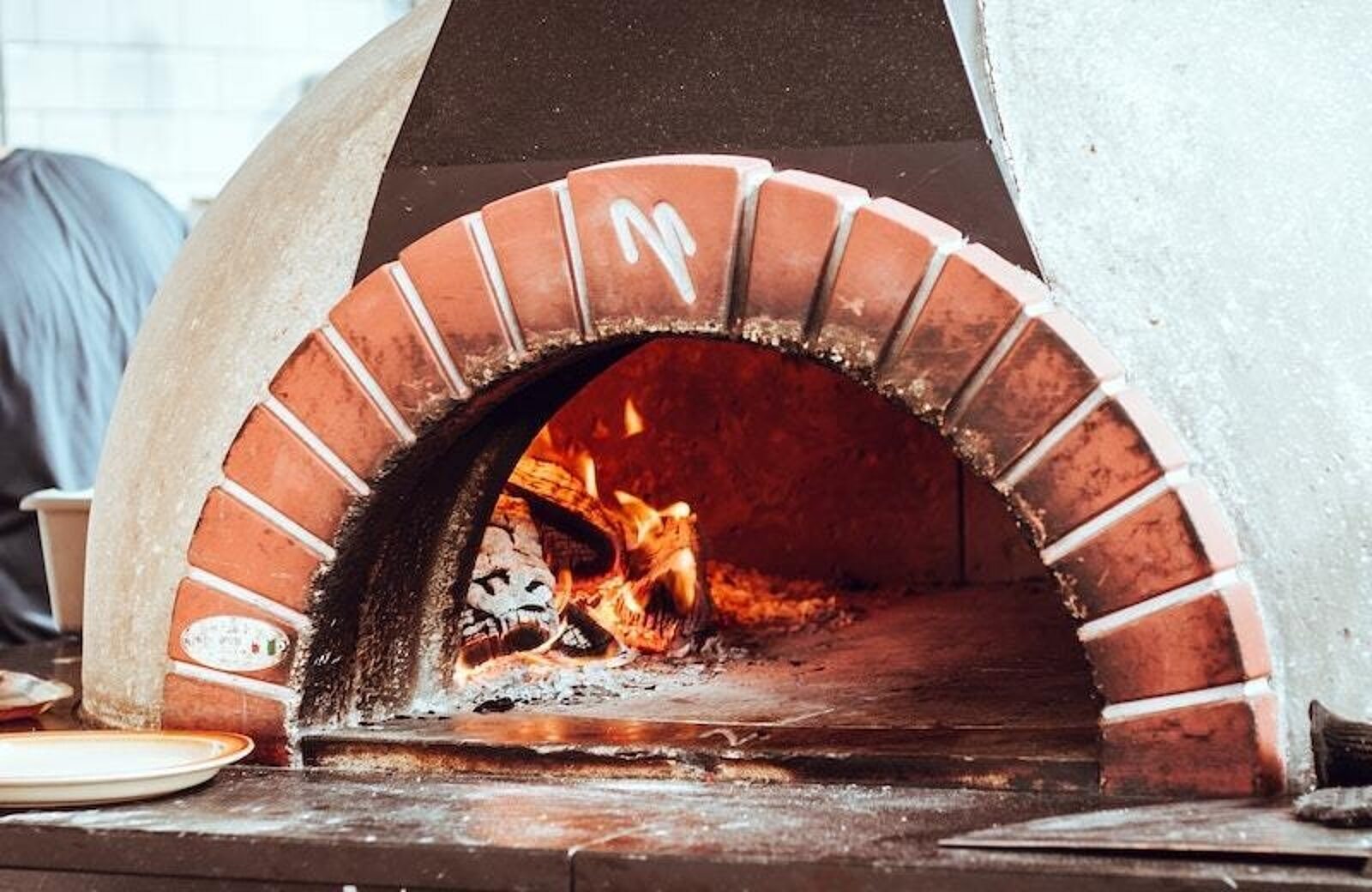
Pizza Ovens for Restaurants: Everything Operators Need to Know
Looking to invest in a restaurant pizza oven? Find the perfect match for your kitchen with our comprehensive guide. Explore different types, consider key factors, and make an informed decision for delicious and authentic pizza.

Justin GuinnAuthor


Pizza POS Comparison Tool
A free, customizable Pizza POS Comparison Tool to research and compare point of sale systems in one Excel spreadsheet or editable PDF.
Get free downloadChoosing the right pizza oven for restaurants can be quite the challenge.
Getting it right is critical for pizzerias to achieve consistently delicious pizza to dine-in, takeout, and delivery guests.
There are tons of considerations to weigh. Fuel source options alone include brick-built, wood-fired pizza ovens, stainless steel, electric pizza oven, and even natural gas-fired or propane based solutions.
In this guide, we will explore the various types of pizza ovens available for commercial use, including commercial pizza ovens, wood-fired pizza ovens, deck ovens, brick pizza ovens, countertop pizza ovens, and outdoor pizza ovens.
Rooting restaurant pizza oven needs in volume and capacity
Operators need to choose their pizza oven based on their need.
After the needs of their kitchen design and space, the first priority for the decision should be volume.
High-volume pizzerias will want to consider the oven's cooking capacity. Ensuring that the oven can handle a high volume of pizzas is essential to meeting customer demand during peak hours. Another crucial factor is the oven's efficiency and speed. A fast-cooking oven will allow you to serve pizzas quickly, reducing waiting times for your customers. Additionally, you should consider the oven's durability and reliability, as it will be in constant use in a high-volume restaurant setting.
This all assumes the restaurant has the skilled bakers and pizza makers required to unlock the full potential of the oven. Requirements for kitchen staff skill levels and experience will vary depending on the type of oven operators choose.
Different types of commercial pizza oven
A commercial pizza oven is a must-have for any restaurant that wants to offer delicious pizza to its customers. A commercial oven is designed to withstand the high demands of a busy restaurant kitchen, producing consistent and delicious pizzas quickly and efficiently. Commercial ovens come in a variety of sizes, from small countertop models to large floor-standing ovens that can cook multiple pizzas at once.
When choosing a commercial pizza oven, it's important to consider the type of fuel it uses. There are different options available such as gas, electric, or wood-fired ovens.
Wood-fired pizza oven
For businesses that want to offer an authentic pizza experience, a wood-fired pizza oven is an excellent choice. These ovens are fueled by burning wood, which gives the pizza a unique smoky flavor. They work by heating up the interior of the oven, creating an environment that cooks pizza quickly and evenly.
Wood-fired ovens are perfect for creating a rustic, Italian-style pizza, but they can be more challenging to operate than other types of ovens. Since the heat source is natural wood, the temperature can be more difficult to regulate.
Conveyor pizza oven
One popular option for high-volume restaurants is a conveyor pizza oven.
These gas pizza ovens have a conveyor belt that moves the pizzas through the oven, ensuring even cooking and consistent results. Conveyor ovens are known for their speed and efficiency, allowing you to cook multiple pizzas at the same time. And their automated nature also makes them easy to use and requires less monitoring from staff — potentially making them a more cost effective option for high volume operations.
Pizza deck ovens
A deck oven is a type of commercial pizza oven that uses a "deck" - a flat cooking surface made of stone or ceramic - to cook pizza.
Most deck ovens offer double deck if not triple or quadruple deck options. Even the single deck pizza ovens are great for high-volume businesses that want to make large batches of pizza at once since they can be stacked in multiple levels. This allows for multiple pizzas to be cooked at the same time.
Deck ovens come in both gas and electric models and are available in a wide range of sizes. They are a popular choice for many pizza restaurants because they are easy to operate and can produce a consistently delicious pizza every time.
Brick pizza ovens
A brick pizza oven is a type of oven that uses bricks to absorb and radiate heat.
The bricks are stacked around the cooking chamber and can reach temperatures of up to 900°F. This high temperature creates an excellent crispy crust and evenly cooked pizza.
Classic wood-burning brick pizza ovens are what typically come to mind, though there are other options for fuel.
Brick ovens are a popular choice for restaurants that want to offer a unique, artisanal pizza experience to their customers. They require more maintenance and can take longer to heat up than other types of ovens. However, their unique heating system and authentic flavor can be worth the extra effort.
Countertop pizza ovens
A countertop pizza oven is a compact, space-saving option perfect for restaurants with limited kitchen space. They are small enough to fit on a countertop but are still capable of producing high-quality pizza in a short amount of time.
They are available in both electric and gas models and come with features such as adjustable temperature controls, timers, and multiple cooking modes. They are a popular choice for restaurants that want to offer pizza as a menu item but don't have a dedicated pizza oven.
Outdoor pizza ovens
Outdoor pizza ovens are designed to be used outside and can be a great addition to any restaurant's patio or outdoor dining area. They are typically wood-fired ovens but can also be gas or electric. The high temperatures produced by outdoor pizza ovens can create amazing crispy pizza crusts.
Outdoor pizza ovens come in a variety of sizes, from small, portable models to large, permanent installations. They are also great for events or catering since they can be easily transported to different locations.
How to get a pizza oven on a food truck
Having a pizza oven in a commercial kitchen can be challenging enough — getting one on a food truck is even more difficult. But operators do it because it allows them to sell delicious pizzas to various locations and events across town.
Installing a pizza oven on a food truck requires careful planning and consideration of space, weight, and ventilation. Operators have to ensure that the food truck has sufficient space to accommodate the size of the oven. Consider the dimensions and weight of the oven and make sure it is suitable for the truck's capacity.
Proper ventilation for the oven is also critical. Pizza ovens generate a significant amount of heat and require adequate ventilation to prevent overheating and potential fire hazards. It is essential to consult with a professional to ensure that the oven is properly installed and the ventilation meets safety standards.
And power requirements of the oven can also be taxing — in general and especially on a generator. Pizza ovens typically require high-voltage electricity to operate, so make sure that a food truck has the appropriate electrical system in place. It is crucial to consult with an electrician to ensure that the truck can support the oven's power needs safely.
Benefits and disadvantages of a deck oven vs an open oven
When choosing between a deck oven and an open oven for your pizzeria, it is essential to consider the benefits and disadvantages of each option.
Deck ovens are known for their ability to produce a unique, crispy crust due to the radiant heat from the stone or ceramic deck. They also provide excellent heat retention, ensuring even cooking throughout the pizza. Deck ovens are versatile and can be used for various types of baking — especially if they have convection. However, they require a longer preheating time and may have limited cooking capacity compared to open ovens.
Open ovens, on the other hand, offer fast preheating times and higher cooking capacity, making them ideal for high-volume restaurants. They provide direct heat and faster cooking times, allowing you to serve pizzas quickly. However, open ovens may not produce the same crisp crust as deck ovens and lack the versatility for other types of baking.
Differences in cleaning pizza stones, conveyor belts, and other oven surfaces
Another key consideration for any new restaurant pizza oven is that favorite foodservice past time — cleaning.
Properly cleaning pizza stones, conveyor belts, and other oven surfaces is crucial for maintaining food safety and extending the lifespan of your equipment.
Pizza stones must cool down completely before removing any debris or excess flour. Kitchen staff can use a brush or spatula to scrape off any stuck-on residue and wipe the stone with a damp cloth, though they should avoid using any soap or abrasive cleaners that can damage the stone's surface.
Conveyor belts are much less temperamental than oven bricks. All kitchen staff have to worry about is removing any large debris or food particles. Then they can go about applying a food-safe degreaser and use a brush or cloth to clean the belt followed by a rinse.
Other oven surfaces, such as the interior walls and racks, should be cleaned regularly to remove grease and food residues. Use a non-abrasive cleaner and a soft cloth to wipe down the surfaces. For stubborn stains, you may need to use a scrub brush or scouring pad, but be careful not to scratch or damage the oven's surface.
Regular and proper cleaning of pizza stones, conveyor belts, and other oven surfaces is essential to prevent the buildup of bacteria, improve food quality, and maintain the efficiency of your equipment.
Pick a pizza oven for restaurant success
A high-quality pizza oven is an essential tool for any restaurant that wants to offer delicious pizza to its customers. Whether you choose a commercial oven, wood-fired oven, deck oven, brick oven, countertop oven, or outdoor oven, there is an option available for every restaurant's needs.
Remember that investing in a high-quality oven can significantly impact the quality and taste of the pizza your restaurant serves. Choose carefully, and your customers will be sure to thank you.
Is this article helpful?
DISCLAIMER: This information is provided for general informational purposes only, and publication does not constitute an endorsement. Toast does not warrant the accuracy or completeness of any information, text, graphics, links, or other items contained within this content. Toast does not guarantee you will achieve any specific results if you follow any advice herein. It may be advisable for you to consult with a professional such as a lawyer, accountant, or business advisor for advice specific to your situation.
Read More
Subscribe to On the Line
Sign up to get industry intel, advice, tools, and honest takes from real people tackling their restaurants’ greatest challenges.



